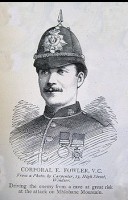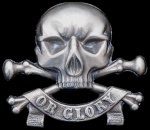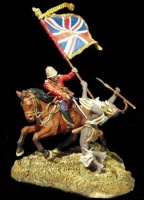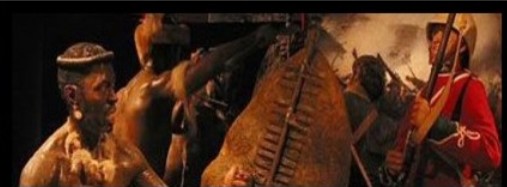| Latest topics | » The Pictorial World - March 15th 1879 Yesterday at 1:13 pm by ben2000 » The lost diary of Pvt James Owen Thu Jul 25, 2024 12:03 pm by miklew » Last of the 24th at Isandhlwana Wed Jul 24, 2024 6:16 pm by John Young » What was the uniform of field marshals/generals in the zulu war? Mon Jul 22, 2024 6:53 am by John Young » Henderson and the NNH at Rorke's Drift  Sat Jul 20, 2024 12:17 pm by SRB1965 » Capt. D. Hayes 1/3rd Regt., NNC Thu Jul 18, 2024 11:11 am by Julian Whybra » The Wrecked Camp Wed Jul 17, 2024 4:33 pm by Julian Whybra » Private N/N John Robert Branch 90th Regiment and his discovered diary Mon Jul 15, 2024 8:53 pm by 1879graves » Private John Scott 24th Regiment a fugitive at large Sun Jul 14, 2024 12:06 pm by 1879graves » 90th foot sgt T. Collins 214 Sun Jul 14, 2024 10:57 am by johnman » Baron Von Steitencron Wed Jul 10, 2024 3:10 pm by Julian Whybra » Sgt Joseph Windridge, Defender of Rorke's Drift - Memorial Tue Jul 09, 2024 3:15 am by 90th » Writing advice Sun Jul 07, 2024 4:04 pm by Julian Whybra » South Africa 1877-79, 1 clasp, 1877-8-9 (4389 Fr. Sergt. S. Smith. O/2. Bde. R.A.) Sun Jul 07, 2024 9:30 am by rai » The trashing of the Zulu monument to the brave warriors at Isandlawana March 12, 2024 has been blamed on scrap metal scavengers. Thu Jul 04, 2024 7:41 pm by ADMIN» The Goodwill Zulu Festival: Celebrating the Welsh and KwaZulu Natal Shared Heritage. Thu Jul 04, 2024 7:27 pm by ADMIN» Any nominal role of G Coy 2/24th regiment  Thu Jul 04, 2024 11:18 am by Wayne » Bassage Diary Thu Jul 04, 2024 9:31 am by Julian Whybra » Prior to Sihayo's Kraal  Thu Jul 04, 2024 9:19 am by 90th » British Fort Locations Thu Jul 04, 2024 3:40 am by 90th » Sergeant 1064 Tom Hick / Hicks G Company 2/24th Regiment Wed Jul 03, 2024 11:05 am by Julian Whybra » A Hungarian soldier in the Zulu War (?) Fri Jun 28, 2024 2:31 pm by Mr M. Cooper » Private 25B/279 Henry Sears Bugler E Company 24th Reg. KIA Isandlwana Thu Jun 27, 2024 1:07 pm by gardner1879 » Hamilton Browne's birthday Fri Jun 21, 2024 9:22 am by Julian Whybra » Zulu "Corps" Thu Jun 20, 2024 6:01 pm by Hobbes » Army Pay Department Personnel Thu Jun 20, 2024 11:49 am by Julian Whybra » Ntshingwayo birth date Sun Jun 16, 2024 11:37 am by Hobbes » Zibhebhu and Cetshwayo's family Wed Jun 05, 2024 9:11 pm by Julian Whybra » Smith's Store/Hotel Wed Jun 05, 2024 6:06 pm by Julian Whybra » Corporal James Frowen Williams F Company.  Tue Jun 04, 2024 5:20 pm by Julian Whybra » Shaka iLembe Sat Jun 01, 2024 1:27 pm by Jon84 » Bugler 1415 Thomas Finn / Flin 90th Regiment  Sat May 25, 2024 11:28 am by johnman » Inspector-General Evelyn Richard Hugh Pollard Tue May 14, 2024 10:13 am by ADMIN» Alfred Fairlie Henderson photographs. Sat May 11, 2024 8:01 am by Julian Whybra » Fairlie's Native Police Thu May 02, 2024 9:12 pm by Hobbes |
| July 2024 | | Mon | Tue | Wed | Thu | Fri | Sat | Sun |
|---|
| 1 | 2 | 3 | 4 | 5 | 6 | 7 | | 8 | 9 | 10 | 11 | 12 | 13 | 14 | | 15 | 16 | 17 | 18 | 19 | 20 | 21 | | 22 | 23 | 24 | 25 | 26 | 27 | 28 | | 29 | 30 | 31 | | | | |  Calendar Calendar |
|
| Top posting users this month | |
| New topics | » The Pictorial World - March 15th 1879 Yesterday at 1:13 pm by ben2000 » The lost diary of Pvt James Owen Thu Jul 25, 2024 12:03 pm by miklew » Last of the 24th at Isandhlwana Wed Jul 24, 2024 5:53 pm by miklew » What was the uniform of field marshals/generals in the zulu war? Sun Jul 21, 2024 12:30 pm by darthvaix » Henderson and the NNH at Rorke's Drift  Fri Jul 19, 2024 1:29 pm by SRB1965 » Capt. D. Hayes 1/3rd Regt., NNC Wed Jul 17, 2024 10:52 pm by Julian Whybra » The Wrecked Camp Sun Jul 14, 2024 8:51 am by 61MECH » The trashing of the Zulu monument to the brave warriors at Isandlawana March 12, 2024 has been blamed on scrap metal scavengers. Thu Jul 04, 2024 7:41 pm by ADMIN» The Goodwill Zulu Festival: Celebrating the Welsh and KwaZulu Natal Shared Heritage. Thu Jul 04, 2024 7:27 pm by ADMIN |
| Zero tolerance to harassment and bullying. | |
Due to recent events on this forum, we have now imposed a zero tolerance to harassment and bullying. All reports will be treated seriously, and will lead to a permanent ban of both membership and IP address.
Any member blatantly corresponding in a deliberate and provoking manner will be removed from the forum as quickly as possible after the event.
If any members are being harassed behind the scenes PM facility by any member/s here at 1879zuluwar.com please do not hesitate to forward the offending text.
We are all here to communicate and enjoy the various discussions and information on the Anglo Zulu War of 1879. Opinions will vary, you will agree and disagree with one another, we will have debates, and so it goes.
There is no excuse for harassment or bullying of anyone by another person on this site.
The above applies to the main frame areas of the forum.
The ring which is the last section on the forum, is available to those members who wish to partake in slagging matches. That section cannot be viewed by guests and only viewed by members that wish to do so. |
| Fair Use Notice | | Fair use notice.
This website may contain copyrighted material the use of which has not been specifically authorised by the copyright owner.
We are making such material and images are available in our efforts to advance the understanding of the “Anglo Zulu War of 1879. For educational & recreational purposes.
We believe this constitutes a 'fair use' of any such copyrighted material, as provided for in UK copyright law. The information is purely for educational and research purposes only. No profit is made from any part of this website.
If you hold the copyright on any material on the site, or material refers to you, and you would like it to be removed, please let us know and we will work with you to reach a resolution. |
| | | Naval Brigade (Print) Side fixing Bayonet |  |
| | | Author | Message |
|---|
littlehand

Posts : 7076
Join date : 2009-04-24
Age : 55
Location : Down South.
 |  Subject: Naval Brigade (Print) Side fixing Bayonet Subject: Naval Brigade (Print) Side fixing Bayonet  Sun Feb 13, 2011 9:28 pm Sun Feb 13, 2011 9:28 pm | |
| [You must be registered and logged in to see this image.]No copy right showed. I didn't know the Bayonet was attached sideways.
Last edited by littlehand on Tue Feb 15, 2011 10:39 pm; edited 1 time in total |
|   | | Guest
Guest
 |  Subject: Re: Naval Brigade (Print) Side fixing Bayonet Subject: Re: Naval Brigade (Print) Side fixing Bayonet  Tue Feb 15, 2011 7:40 pm Tue Feb 15, 2011 7:40 pm | |
| littlehand,
Not sure if this is a case of artistic license, or an accurate representation of a Martini Henry with navy cutlass. I have looked through any pictures to which I have access, and can’t find one clear enough to see how a navy cutlass bayonet would be attached to a Martini Henry. Socket bayonets slide over the barrel and lock behind the front sight. The cutlass bayonet didn’t have a socket. There was a ring with what appears to be a locking attachment on the opposite side from the hand guard. I am assuming that once a sailor slid the bayonet onto the rifle, he would then have to give it a twist to lock the bayonet in place.
Here are a couple of photos of a British 1857 pattern bayonet:
http://www.swordsales.eu/454-British-1857P-Naval-Cutlass-Bayonet.html
Maybe Neil Apinshaw can shed some light.
Petty Officer Tom
|
|   | | 1879graves

Posts : 3379
Join date : 2009-03-03
Location : Devon
 |  Subject: Re: Naval Brigade (Print) Side fixing Bayonet Subject: Re: Naval Brigade (Print) Side fixing Bayonet  Tue Feb 15, 2011 8:00 pm Tue Feb 15, 2011 8:00 pm | |
| |
|   | | 1879graves

Posts : 3379
Join date : 2009-03-03
Location : Devon
 |  Subject: Re: Naval Brigade (Print) Side fixing Bayonet Subject: Re: Naval Brigade (Print) Side fixing Bayonet  Tue Feb 15, 2011 8:33 pm Tue Feb 15, 2011 8:33 pm | |
| Hi Littlehand This was the best I could find at the moment. As you can see from this drawing, the hand guard is too the side. [You must be registered and logged in to see this image.] |
|   | | littlehand

Posts : 7076
Join date : 2009-04-24
Age : 55
Location : Down South.
 |  Subject: Re: Naval Brigade (Print) Side fixing Bayonet Subject: Re: Naval Brigade (Print) Side fixing Bayonet  Tue Feb 15, 2011 10:51 pm Tue Feb 15, 2011 10:51 pm | |
| [You must be registered and logged in to see this image.]"Cutlass Bayonets - The British Naval Pattern 1859 was the first of the "cutlass" bayonets and were intended to do away with the necessity of a separate boarding cutlass. Initially these were long, heavy, slightly curved unfullered blades with sheet steel bowl guards, although later patterns were lightened and straightened. In 1871 they were converted for use with the Martini Henry rifle and were to be the basis of the aforementioned P1879 Artillery Carbine sword bayonet." |
|   | | Neil Aspinshaw

Posts : 553
Join date : 2009-10-14
Location : Loughborough
 |  Subject: Re: Naval Brigade (Print) Side fixing Bayonet Subject: Re: Naval Brigade (Print) Side fixing Bayonet  Wed Feb 16, 2011 1:42 pm Wed Feb 16, 2011 1:42 pm | |
| The bayonet in the images from 1879 graves is the pattern '59, for the Enfield Rifle, if it was for Martini it would have a mortice slot in the pommel and the muzzle ring reduced.
In reality the M-H was designed to have a sword bayonet as standard, not a socket bayonet. During the trials, the Elcho sword bayonet was the pattern of choice, however, due to various production and decision issues it failed to get introduced, thus conversions of the Pattern 53 socket bayonet for the Enfield were adopted, and known as the P53/74, it was a stop gap, which actually became standard.
In 1875 a new sword bayonet was trialled, known as the 75 Pattern sword, it was saw backed, blade around 18", it was widely liked, but again the WD could not make a decision and only 900 were made before production stopped and the famous P'76 triangular at 22" became standard. It was simply the case of extending the P53, mainly as the Martini, with bayonet, was 5" (125mm) shorter than a Snider or Enfield with bayonet fixed and the army considered the reach insufficient.
I was not until 1884 when the Enfield Martini Mk1 rifle in .402" calibre was trialled that the British Army decided to adopt the sword bayonet as standard, culmination in the P1887 sword bayonet in Mk1,2 & 3 Pattern.
The need for a sword was highlighted by the initial Sudan campaigns, so the Camel Coprs were issued the Yataghan (previously only issued to NCO's and rifle brigades) as standard.
So you have six types of sword and three socket bayonet for the MH rifle.
1) Cutlass
2) Yataghan
3) Elcho (sawback) **
4) P75 (sawback) **
5) P1887 sword (three variants + P91 E-M conversions)
6) P1888 (for Martini Metford)
** trialled but not adopted
Socket
6)P53/74 17"
7) P76 22"
8) P95 22" bushed for .303 Martini Enfield
Carbine IC1 Artillery (not cavalry, they have no bayonet bar)
P77 sawback
Artillery and Garrison Carbines Mk2/3 (from cut down rifles)
Yataghan conversion
|
|   | | Guest
Guest
 |  Subject: Re: Naval Brigade (Print) Side fixing Bayonet Subject: Re: Naval Brigade (Print) Side fixing Bayonet  Wed Feb 16, 2011 3:31 pm Wed Feb 16, 2011 3:31 pm | |
| Neil,
Thank you, you have answered a lot of questions.
One last question. In the drawing oringinally posted by liitlehand is the cutlass bayonet correctly mounted on the rifle?
Petty Officer Tom |
|   | | Neil Aspinshaw

Posts : 553
Join date : 2009-10-14
Location : Loughborough
 |  Subject: Re: Naval Brigade (Print) Side fixing Bayonet Subject: Re: Naval Brigade (Print) Side fixing Bayonet  Wed Feb 16, 2011 5:38 pm Wed Feb 16, 2011 5:38 pm | |
| Yes the mounting is correct, all swords were mounted on the right hand of the muzzle, and fastened to the bayonet bar on the front band. The idea is actually from the muzzle loading era, what you do not want to do is stab your hand when ramming home a bullet with the ramrod, hence the P53/74 curves away, and the Yataghan has a goose neck. Only with the advent of the .402" calibre Enfield Martini Pattern A of 1885 did they consider mounting the bayonet underneath the barrel, in fact the P'91 bayonet is a conversion of that under-fitting bayonet , alas, the E-M was destined to be cancelled and the 58,000 made were converted to M-H Mk4 pattern A. The Idea was not lost however, the SMLE of 1908 did exactly with the sword bayonet as Enfield had been pushing for two decades before, i.e it was slung directly under the barrel to provide balance [You must be registered and logged in to see this image.]Image of bayonet band on Mk2 MH
Last edited by Neil Aspinshaw on Wed Feb 16, 2011 7:17 pm; edited 1 time in total |
|   | | 1879graves

Posts : 3379
Join date : 2009-03-03
Location : Devon
 |  Subject: Re: Naval Brigade (Print) Side fixing Bayonet Subject: Re: Naval Brigade (Print) Side fixing Bayonet  Wed Feb 16, 2011 6:26 pm Wed Feb 16, 2011 6:26 pm | |
| Hi Neil Many thanks for all the information and I hope it has answered Littlehands question  |
|   | | John

Posts : 2558
Join date : 2009-04-06
Age : 61
Location : UK
 |  Subject: Re: Naval Brigade (Print) Side fixing Bayonet Subject: Re: Naval Brigade (Print) Side fixing Bayonet  Wed Feb 16, 2011 11:33 pm Wed Feb 16, 2011 11:33 pm | |
| Informative thread. Thanks to all concerned. |
|   | | merlin
Posts : 3
Join date : 2014-04-07
 |  Subject: Re: Naval Brigade (Print) Side fixing Bayonet Subject: Re: Naval Brigade (Print) Side fixing Bayonet  Fri Apr 11, 2014 7:34 pm Fri Apr 11, 2014 7:34 pm | |
|   - Neil Aspinshaw wrote:
- The bayonet in the images from 1879 graves is the pattern '59, for the Enfield Rifle, if it was for Martini it would have a mortice slot in the pommel and the muzzle ring reduced.
In reality the M-H was designed to have a sword bayonet as standard, not a socket bayonet. During the trials, the Elcho sword bayonet was the pattern of choice, however, due to various production and decision issues it failed to get introduced, thus conversions of the Pattern 53 socket bayonet for the Enfield were adopted, and known as the P53/74, it was a stop gap, which actually became standard.
In 1875 a new sword bayonet was trialled, known as the 75 Pattern sword, it was saw backed, blade around 18", it was widely liked, but again the WD could not make a decision and only 900 were made before production stopped and the famous P'76 triangular at 22" became standard. It was simply the case of extending the P53, mainly as the Martini, with bayonet, was 5" (125mm) shorter than a Snider or Enfield with bayonet fixed and the army considered the reach insufficient.
I was not until 1884 when the Enfield Martini Mk1 rifle in .402" calibre was trialled that the British Army decided to adopt the sword bayonet as standard, culmination in the P1887 sword bayonet in Mk1,2 & 3 Pattern.
The need for a sword was highlighted by the initial Sudan campaigns, so the Camel Coprs were issued the Yataghan (previously only issued to NCO's and rifle brigades) as standard.
So you have six types of sword and three socket bayonet for the MH rifle.
1) Cutlass
2) Yataghan
3) Elcho (sawback) **
4) P75 (sawback) **
5) P1887 sword (three variants + P91 E-M conversions)
6) P1888 (for Martini Metford)
** trialled but not adopted
Socket
6)P53/74 17"
7) P76 22"
8) P95 22" bushed for .303 Martini Enfield
Carbine IC1 Artillery (not cavalry, they have no bayonet bar)
P77 sawback
Artillery and Garrison Carbines Mk2/3 (from cut down rifles)
Yataghan conversion
|
|   | | merlin
Posts : 3
Join date : 2014-04-07
 |  Subject: Re: Naval Brigade (Print) Side fixing Bayonet Subject: Re: Naval Brigade (Print) Side fixing Bayonet  Fri Apr 11, 2014 7:47 pm Fri Apr 11, 2014 7:47 pm | |
| I own a P1859 sawback bayonet converted to a P1879 bayonet with naval mark on it thare was only 449 converted so it seems that a few were issued to the navy. It was olso shortend the last markings were 1912. It was made by Enfield with E59 stamp. Hope this was helpful. Terry |
|   | | Chelmsfordthescapegoat

Posts : 2593
Join date : 2009-04-24
 |  Subject: Re: Naval Brigade (Print) Side fixing Bayonet Subject: Re: Naval Brigade (Print) Side fixing Bayonet  Sat Apr 12, 2014 7:40 am Sat Apr 12, 2014 7:40 am | |
| Merlin. Any chance of a photo. |
|   | | merlin
Posts : 3
Join date : 2014-04-07
 |  Subject: Re: Naval Brigade (Print) Side fixing Bayonet Subject: Re: Naval Brigade (Print) Side fixing Bayonet  Sun Apr 13, 2014 8:17 pm Sun Apr 13, 2014 8:17 pm | |
| Dear Chelmsford Will send photo as soon as my son comes back from holiday as i am not capable but hoping my son will teach me wil send A.S.A.P |
|   | | | | Naval Brigade (Print) Side fixing Bayonet |  |
|
Similar topics |  |
|
| | Permissions in this forum: | You cannot reply to topics in this forum
| |
| |
| |
